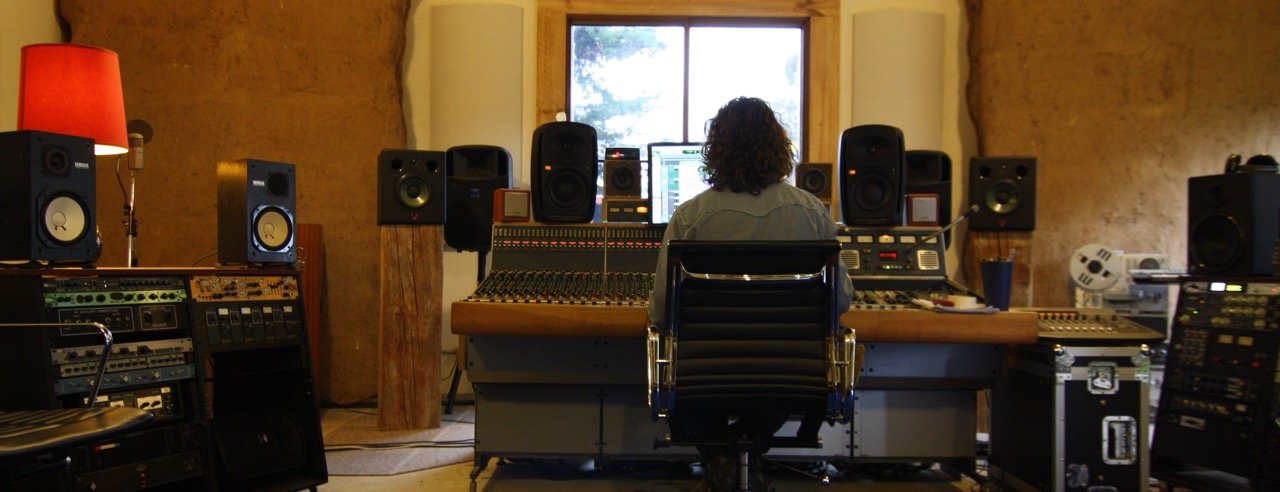News
11 May 2021
Listen Here: Match Fitness & Oversteer

Subscribe to CX E-News
Great mix engineers are like star footballers: they perform at their best when they’re match fit and playing regularly. It doesn’t matter how skilled you are or how many trophies you’ve accrued over the years; being in form today is what counts.
I must have talked about mixing audio in nearly every CX Magazine since way back in Issue 75, yet only now is there finally a ‘Mixing’ Issue! About bloody time guys.
Perhaps I should chat about the weather instead, just to be contrary.
Actually, I’ve just come off about 25 days straight of solid, wall-to-wall mixing a full album in the studio with Kutcha Edwards, as well as live gigs with Ella Hooper, Kate Ceberano, Neil Murray and David Bridie, so I’m in form.
So, perhaps I should start there… and talk about form.
Match Fitness
Like any pursuit or profession, being in form is part of what makes a good mix engineer, live or in the studio. You always hear about cricketers and footballers being in form; well so it is with mixing. You have to practise to get in shape; perform regularly to become match fit. That’s when you tend to do your best work. (Although, mixing for more than three weeks without much of a break is a bit nuts it must be said. I wouldn’t advise it. Unfortunately, circumstances have made it unavoidable for me lately.)
Being match fit means a few things. Firstly, you tend to work faster and more efficiently when you’re in form. You tend not to squander time or arse about as much, which means you get through the workload more quickly. You don’t rush obviously, but nor do you procrastinate.
You also maintain a finer perspective on your gear, monitors and room, which allows you to act more instinctively with regard to levels and tone, without having to muse too much over whether a sound should have more or less of something. Put another way, you spend less time thinking about whether the decisions you make are the right ones, and more time getting on with the tasks at hand.
When you’re mixing regularly, there’s also a certain freshness of perspective (ironically) that you develop with regard to key elements of mixing structure: choices of reverbs for certain contexts, compression settings, sub-group layouts of large numbers of channels (like drums, strings or choirs etc.) and parallel bussing of key elements that may need more aggressive tones or treatments.
There’s also the benefit of being more au fait with all your software commands when you use them every day. Knowing these inside out, and fine-tuning your preference settings to suit your workflow, can save you hours sometimes. Nothing sidetracks a mix session faster than searching haplessly for answers when your software is misbehaving, crashing or doing something untoward.

Oversteer
Another aspect of mixing that rarely gets a mention is a phenomenon I call ‘oversteer,’ which is normally something you might read about in a car magazine, or admit to just moments before ploughing into a tree in your old HQ. In an audio context, oversteer simply describes the tendency when mixing to overdo whatever it is you’re doing at the time. It might be too much reverb on a vocal, too deep a cut on a high-pass filter, too much bus compression on an entire mix, the wrong level of an instrument – that sort of thing.
It happens all the time to seasoned professionals and amateurs alike, in every aspect of mixing, sometimes in dozens of small ways in one mix. The main cause, it seems to me, is a mix engineer’s natural (and unavoidable) tendency to focus on a sound to the detriment of his or her ability to re-contextualise it later (i.e., put it back in its place).
The good news is that oversteer usually has a simple cure… time away from the session. It’s one of the key benefits of computer-based mixing – being able to remove yourself quickly and easily from a piece, set it aside without losing your sound, and either open another mix or take a break.
Oversteer is typically thrown into stark contrast later when you return to the track (after dinner, the next day), when your fresh perspective allows you to hear problems clearly and act decisively. Back in the days of analogue consoles and outboard gear, engineers had little choice but to work long hours to push mixes over the line one at a time, even after exhaustion with that particular piece had set in.
Being able to save, close and then reopen a session at will is an extremely powerful asset at the modern mix engineer’s disposal. Used wisely it can advance your mixes enormously.
Oversteer can happen to any sound at any time, but it’s particularly prevalent in and around last-minute overdubs, or when the Solo button is used too often or for extended periods. Putting a sound high above a mix, as often happens while you’re overdubbing a new musical element or soloing a sound while working on it at length, can quickly warp your perspective on how that sound ultimately beds back into the final mix.
Not only does the soloed element inevitably diminish upon its return to the track, it potentially loses focus, fidelity and nuance, depending on the nature of the sound. This apparent loss of attractive detail can be too much for your subconscious to bear sometimes – even when your conscious mind is trying to guard against the problem. This can lead you to turn it up, EQ it too much, fiddle with its compression settings, or a bit of all these things, which is partly why mix engineers warn against the overuse of a console’s Solo function. Anything that pulls a sound out of its context for too long can cause oversteer while it’s soloed, and again later when it’s returned to the fray. I often find the most recently added or problematic elements are too loud when I revisit a mix at a later date.
On The Flipside
While there’s no denying digital recall is a huge asset in many respects, it also comes with its own set of dangers and pitfalls, not least of which is the potential for it to lead to endless fiddling. Admittedly, one mix engineer’s tinkering is another’s fine-tuning, but regardless of your perspective on this, a different kind of exhaustion can set in when a mix is recalled too often, and sometimes this occurs when you least expect it.
This can do several things at once: potentially sour your interest in the piece, send you up the garden path for no appreciable benefit, damage personal relationships, and blow the budget. The problem with a computer’s capacity for endless recall is precisely that – it’s endless. Without a human limitation placed upon it there’s the potential for digital recall to drive you or your clients around the twist. Moreover, there’s often no way of predicting who might hit the wall first, or when, simply because there’s no way of quantifying how much energy you, or your clients, have for a given project. Suffice it to say, the computer has infinitely more capacity to recall a mix than any human ever will. Don’t forget, it’s us humans that need to stay in control here; otherwise a scene from Terminator might ensue – not pretty.
A Final Tip
In my experience, final mastering tone is something every mix engineer needs to get as close to as possible. I’m not suggesting you should try to circumvent the mastering process by doing it yourself, but it’s important nonetheless to make every effort to understand what mastering engineers do with your mixes. If there’s a pattern emerging from all the masters made of your work, you should be the one who discovers it. I would argue that the vast majority of mixes are generally worked on at relatively high volumes, and these often end up sounding a bit dull.
Do yourself a favour during some of your mixing sessions and A/B your mixes with some other successful music kicking around on the airwaves. No-one likes to make this comparison of course – it’s confronting, demoralising, and at times downright embarrassing, but isn’t it better to face this reality in the privacy of the mixing room, rather than later in public?
Andy Stewart owns and operates The Mill studio in Victoria, a world-class production, mixing and mastering facility. He’s happy to respond to any pleas for pro audio help… andy@themillstudio.com.au
or visit: www.themillstudio.com.au
Subscribe
Published monthly since 1991, our famous AV industry magazine is free for download or pay for print. Subscribers also receive CX News, our free weekly email with the latest industry news and jobs.




